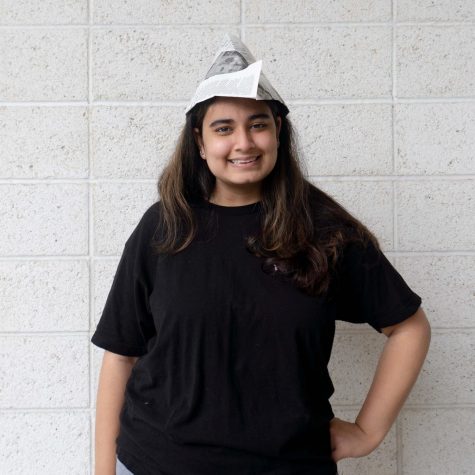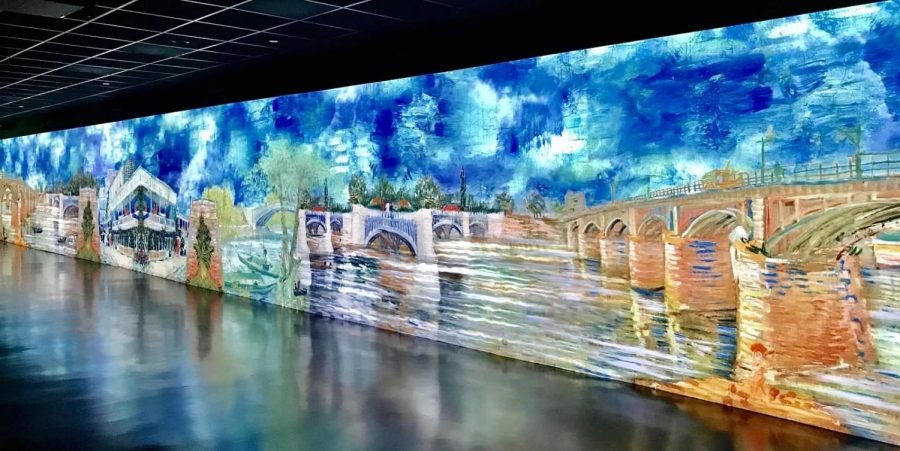Students ‘Gogh’ Visit the Van Gogh Exhibit
Courtesy of Emmanuel Bualalacao
One of the walls, flashing with blues and greys, shows an arched structure from van Gogh’s painting “The Bridge at Courbevoie,” a pointillism oil piece finished in July 1887, according to vangoghmuseum.nl.
As the lights dim, thousands of eyes turn toward the walls of the theatre-like room, gasping in awe as the stone is illuminated with swirling images and colors. Recognizable flashes appear every now and then, like a sunflower from “Tournesols” floating through the sky or a moon and stars slowly gliding over the landscape of “Starry Night.”
The motion brings to life some of the most famous works of artist Vincent van Gogh in “The Original Immersive Van Gogh Experience LA,” which opened to the public on July 31 and will run until Jan. 2.
Sophomore Kody Lin and senior Amanda Zhu first discovered the new exhibit through social media, seeing their friends post photos of their visits to the exhibit.
“The first thing you see are these huge walls with really big displays of paintings,” Lin said. “But they’re not just paintings; they’re animated, so it’s really immersive.”
The exhibit, created by artistic director Massimiliano Siccardi, features 500,000 feet of projection and 60,000 frames of video that animate the classic paintings of van Gogh according to vangoghla.com. As guests wander through the exhibit, the soothing sounds of a piano accompany the hum of a violin, indicating another immersive element of the exhibit: music.
“There was music playing, which you can’t tell from just a picture,” Zhu said. “I think the music was really interesting because it brings emotion, and without music, it’s still amazing, seeing the artwork and everything, but without the music, it’s just not the same experience.”
Van Gogh had a troubled history, and he created the majority of his work at the height of his suffering, after he had checked himself into an asylum in May 1889, according to Britannica.
“It was interesting to see that reflected in his artwork,” Zhu said. “As time progressed, you could tell his art was getting more sinister and depressed-looking, and the music also reflected that.”
In recent years, immersive exhibits like this have become increasingly common, starting with the first installation of Yayoi Kusama’s “Infinity Mirrors” that became popular in the 1960s, according to Creative Resources. More recently however, van Gogh’s work has been a common feature among newer exhibits.
“I think van Gogh, as well as other painters where you really get to see their brushstrokes, like Impressionism and Post-Impressionism, those are so popular because they are colorful and unique, but you can also see the artist’s work, you can see the artist’s hand in it, and I think that’s why people are so drawn to those movements,” visual arts teacher Kearci Moir said.
New machines and computer programs have allowed us to dive deeper into iconic works of art and to truly immerse ourselves in a fantastical world of color and imagination. “The Original Immersive Van Gogh Experience” is a testament to the way technology is changing how we interact with and interpret art.
Your donation will support the student journalists of Portola High School. Your contribution will allow us to purchase equipment and cover our annual website hosting costs.

Zara Shirwany is a staff writer for her second year on the Pilot. She is excited to learn and share about everyone on campus, and can't wait to get started...




